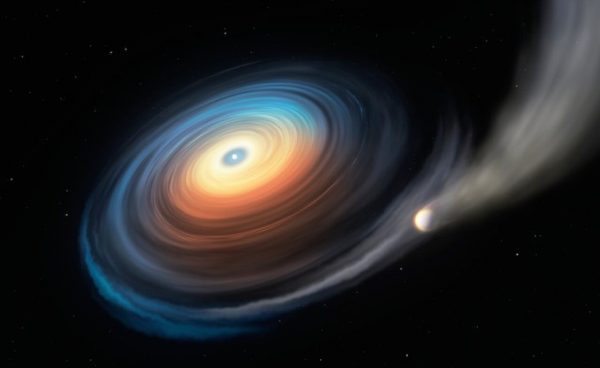In a first, astronomers find traces of a planet orbiting a white dwarf – Astronomy Now Online

In the first observation of its kind, astronomers using the Very Large Telescope in Chile have found evidence of a Neptune-size planet orbiting a white dwarf, the collapsed remnant of a Sun-like star that has run out of nuclear fuel. The planet orbits so close to the dwarf that its atmosphere has been stripped away by intense ultraviolet radiation, forming a disc around the star.
“It was one of those chance discoveries,” said Boris Gänsicke, a researcher at the University of Warwick who led the study. The team was tipped off by finding traces of elements not seen in the spectra of some 7,000 other white dwarf stars observed by the Sloan Digital Sky Survey.
“We knew that there had to be something exceptional going on in this system, and speculated that it may be related to some type of planetary remnant,” he said.
Using the X-shooter instrument with the European Southern Observatory’s VLT, the team found signs of hydrogen, oxygen and sulphur in the light from a star known as WDJ0914+1914. The detected levels were similar to those found icy gas giants like Uranus and Neptune. If such an ice giant orbited close to a hot white dwarf, its outer layers could be stripped away, forming a disc.
“It took a few weeks of very hard thinking to figure out that the only way to make such a disc is the evaporation of a giant planet,” said Matthias Schreiber from the University of Valparaiso in Chile.
The research, published in the journal Nature, offers a glimpse into what might await Earth’s solar system with the Sun burns out and its core collapses into a white dwarf.
“Until recently, very few astronomers paused to ponder the fate of planets orbiting dying stars,” said Gänsicke. “This discovery of a planet orbiting closely around a burnt-out stellar core forcefully demonstrates that the universe is time and again challenging our minds to step beyond our established ideas.”
The discovery, he said, “opens up a new window into the final fate of planetary systems.”






